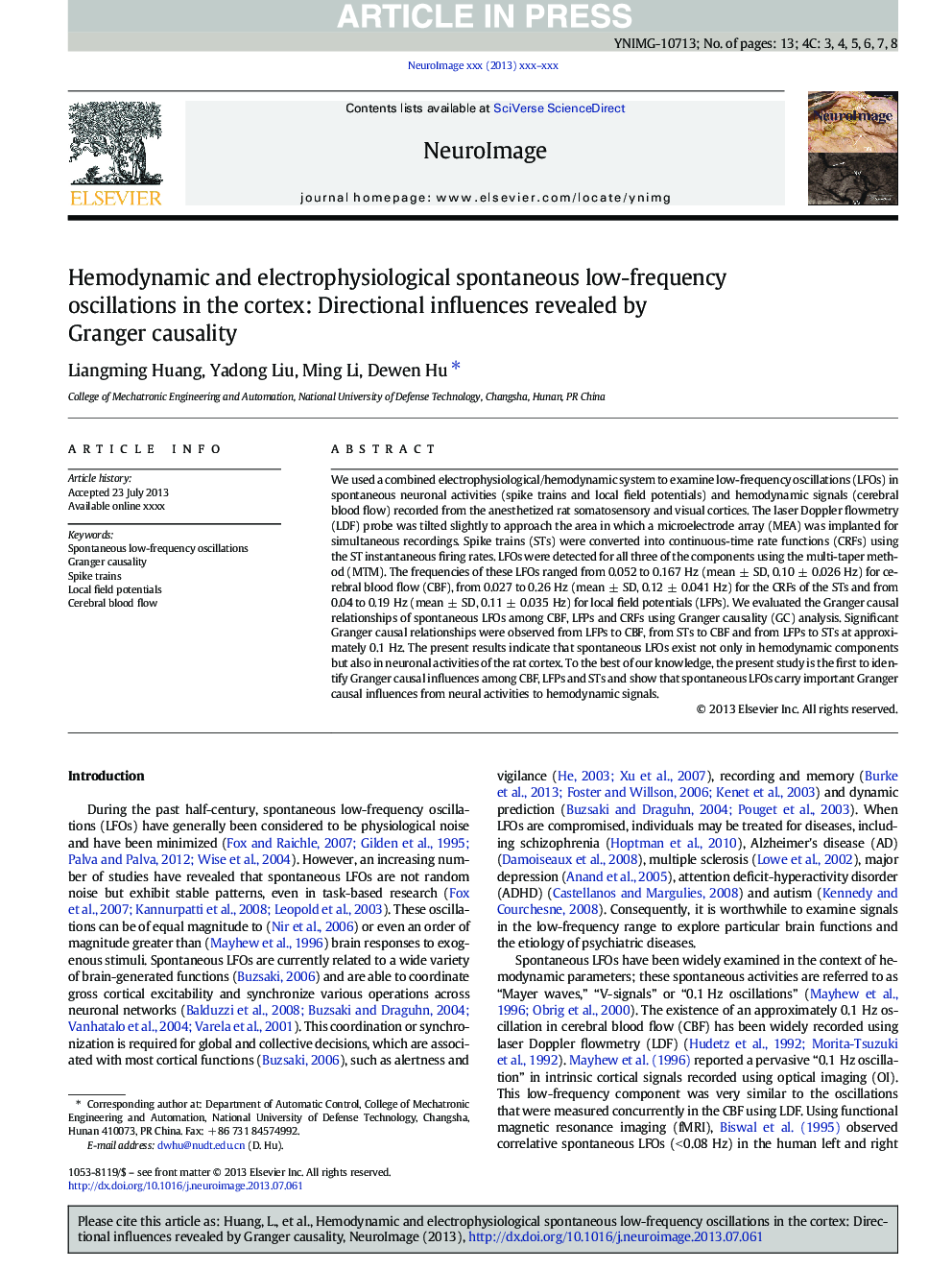| Article ID | Journal | Published Year | Pages | File Type |
|---|---|---|---|---|
| 6028369 | NeuroImage | 2014 | 13 Pages |
Abstract
We used a combined electrophysiological/hemodynamic system to examine low-frequency oscillations (LFOs) in spontaneous neuronal activities (spike trains and local field potentials) and hemodynamic signals (cerebral blood flow) recorded from the anesthetized rat somatosensory and visual cortices. The laser Doppler flowmetry (LDF) probe was tilted slightly to approach the area in which a microelectrode array (MEA) was implanted for simultaneous recordings. Spike trains (STs) were converted into continuous-time rate functions (CRFs) using the ST instantaneous firing rates. LFOs were detected for all three of the components using the multi-taper method (MTM). The frequencies of these LFOs ranged from 0.052 to 0.167 Hz (mean ± SD, 0.10 ± 0.026 Hz) for cerebral blood flow (CBF), from 0.027 to 0.26 Hz (mean ± SD, 0.12 ± 0.041 Hz) for the CRFs of the STs and from 0.04 to 0.19 Hz (mean ± SD, 0.11 ± 0.035 Hz) for local field potentials (LFPs). We evaluated the Granger causal relationships of spontaneous LFOs among CBF, LFPs and CRFs using Granger causality (GC) analysis. Significant Granger causal relationships were observed from LFPs to CBF, from STs to CBF and from LFPs to STs at approximately 0.1 Hz. The present results indicate that spontaneous LFOs exist not only in hemodynamic components but also in neuronal activities of the rat cortex. To the best of our knowledge, the present study is the first to identify Granger causal influences among CBF, LFPs and STs and show that spontaneous LFOs carry important Granger causal influences from neural activities to hemodynamic signals.
Related Topics
Life Sciences
Neuroscience
Cognitive Neuroscience
Authors
Liangming Huang, Yadong Liu, Ming Li, Dewen Hu,
